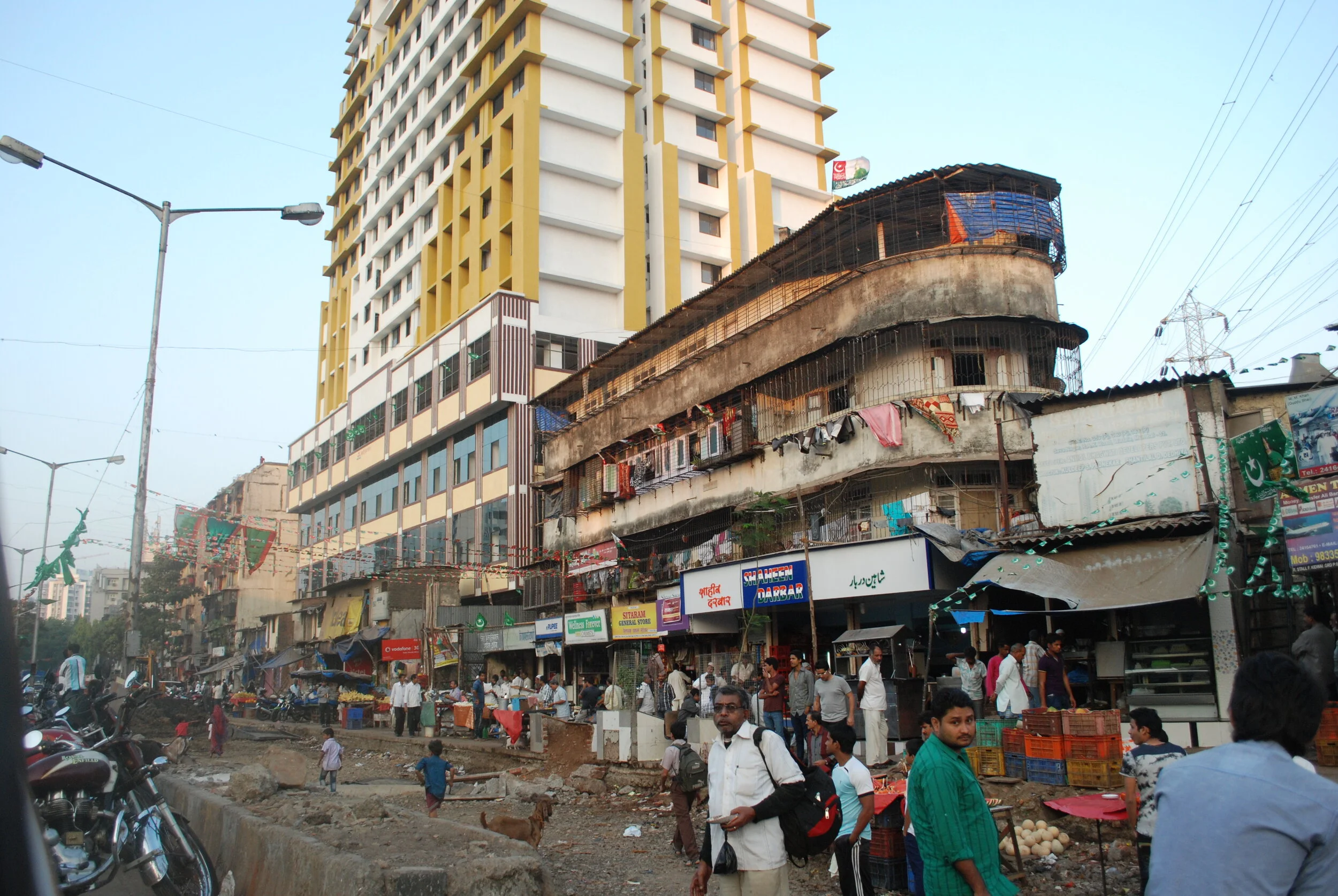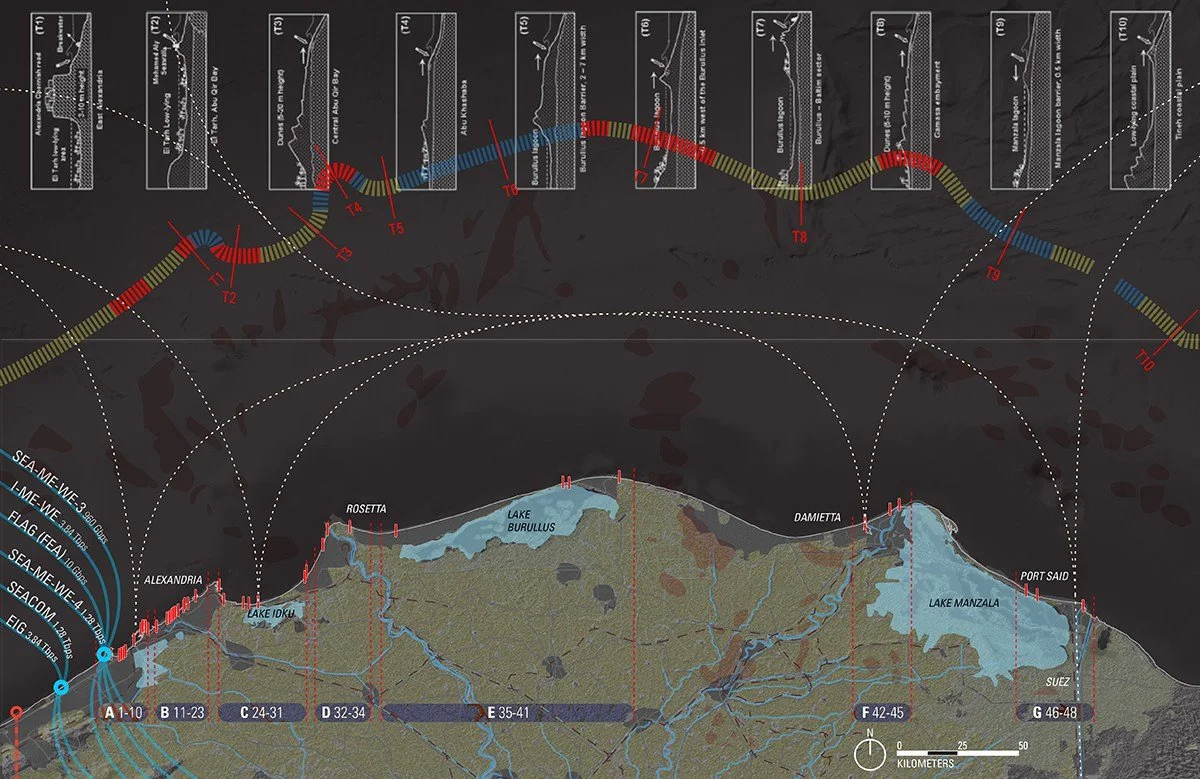Books
50 Ways to Game a City: Loophole Planning in Contemporary Mumbai
50 Ways is a research project combining ethnography, photography, video documentation, and graphic visualization of the processes underlying Mumbai’s contemporary urban form. Since the 1990s, urbanism in Mumbai has been marked by a simultaneous rise of informal settlement alongside the growth of a high-rise city and its infrastructure. During this period, new development rules have introduced unique algorithms for remaking the built environment. These regulations provide incentives to private developers to develop low-cost housing for residents of slums and other precarious housing in exchange for access to the land occupied by vulnerable and marginalized citizens. This formula for privatization, converting slum-resident resettlement into a spatial and architectural currency, has enabled the addition of thousands of square feet to the city’s built stock, radically altering its urban and cultural form.
with Vyjayanthi Rao
UR Books, 2022
Learn more
Planning for Conservation: Looking at Agra
This book investigates the potentials for more sustainable models for conservation of not only the Taj Mahal but several other monuments lining the Yamuna River by telescoping outwards from Agra’s monuments and into larger scales of the river landscape and region. Participants investigate these questions and develop design propositions with strategies, interventions and sites for planning for conservation in Agra, India.
Contributors include Bonnie Burnham, Zhuo Cheng, Vineet Diwadkar, Maria Letizia Garzoli, Marcus Goodwin, Xinjun Gu, Peichen Hao, David Henning, Elad Horn, Andrew Howard, Seunghon Hyun, Maria Jaakkola, Jacob Koch, Yunjie Li, Shiyao Liu, Jose Mayoral Moratilla, Rahul Mehrotra, Dinesh Mehta, Dipti Mehta, Mark Mulligan, Nishiel Patel, Thaddeus Pawlowski, Jane Philbrick, Mengchen Xia, Ruoyun Xu, Han Yang, Sally Young, Bin Zhu, Kolu Zigbi.
World Monuments Fund, 2015
Learn more
Kumbh Mela: Mapping the Ephemeral Megacity
The Kumbh Mela is the largest human gathering on earth. With a 2013 attendance of approximately 34 million, the triennial pilgrimage requires that the communities hosting the gatherings create functioning temporary structures to transport, house and feed enormous crowds of people. In 2013, a team from Harvard University monitored the large-scale temporary city from its preparation through to the actual celebration, investigating and documenting the prototypes for flexible urban planning and offering organizers recommendations on issues around environmental protection. This book presents their comprehensive research findings along with city maps, aerial images and photographs of this most fascinating feat of urban planning.
Contributors include Namita Dharia, Vineet Diwadkar, Diana Eck, Tarun Khanna, Jennifer Leaning, John Macomber, Oscar Malaspina Quevado, Rahul Mehrotra, Dinesh Mehta, Dipti Mehta, Alykhan Mohamed, Benjamin Scheerbarth, Meena Sonea Hewett, Felipe Vera, James Whitten.
Harvard University South Asia Institute / Hate Cantz, 2015
Learn more
Order
Articles & Book Chapters
The Ecology of a Soi: Bangkok’s Generic Architecture from Inside-out
with Brian McGrath
The Nature of Cities (2022)
From Informality to Parametricism and Back Again
with Vyjayanthi Rao
Informal Market Worlds Reader: The Architecture of Economic Pressure
nai010 Publishers, 2015
Entrepreneurial Governance and the Ahmedabad Gujari Bazaar: Erasure of the Sabarmati River as Commons
This essay frames the Sabarmati Riverfront Development Project (SRFDP) against a cultural history of the Sabarmati riverbed as a commons and against the successive aesthetic readings of the riverfront correlating with Ahmedabad’s urbanization. Design practice materialized Ahmedabadi elites’ desires to remake Ahmedabad as a global city by commodifying the Sabarmati landscape. This simultaneously erased the socio-spatial networks and practices grounding the working poor in the riverbed for centuries. The case of the Ahmedabad Gujari Bazaar provides insight into these disempowering processes and into the market traders’ actions to claim their right in shaping the city for their survival as well.
Materia Arquitectura 07 (2013)
Setting the Megacity
with Oscar Malaspina Quevado and James Whitten
Kumbh Mela: Mapping the Ephemeral Megacity
Harvard University South Asia Institute / Hate Cantz, 2015
Governance and Organizational Structures
with Alykhan Mohamed and Benjamin Scheerbarth
Kumbh Mela: Mapping the Ephemeral Megacity
Harvard University South Asia Institute / Hate Cantz, 2015
Deep Streets: Speculation and Slow Violence in Dharavi’s Reinvention
with Vyjayanthi Rao, Hector Tarrido-Picart, Christopher Alton, Tamer Elshayal
Reinventing Dharavi: An International Compendium
Urban Design Research Institute, 2015
Coastal Membrane: Engineered Flows Across the Nile Delta Estuary
with Tamer Elshayal
Penny White Prize and Paul M. Heffernan Fellowship
Harvard University Graduate School of Design, 2012-2014
Exhibitions
Dabbawalas of Mumbai
with Rahul Mehrotra Architects and Rajesh Vora
Fondazione Maxxi, Rome, Italy, 2015
Seoul Biennale of Architecture and Urbanism, Seoul, Korea, 2017
Himalaya: Extreme Territories of Urbanization
with Neil Brenner, Urban Theory Lab
Bi-City Biennale of Architecture / Urbanism, Shenzhen, China, 2016
Yale University School of Architecture, New Haven, USA, 2015
University of Melbourne, Melbourne, Australia, 2015
Kumbh Mela: Mapping the Ephemeral Megacity
with Harvard University South Asia Institute
India Habitat Centre, New Delhi, India, 2015
Harvard University, Cambridge, USA, 2015
Universidad Adolfo Ibanez, Santiago, Chile, 2015











